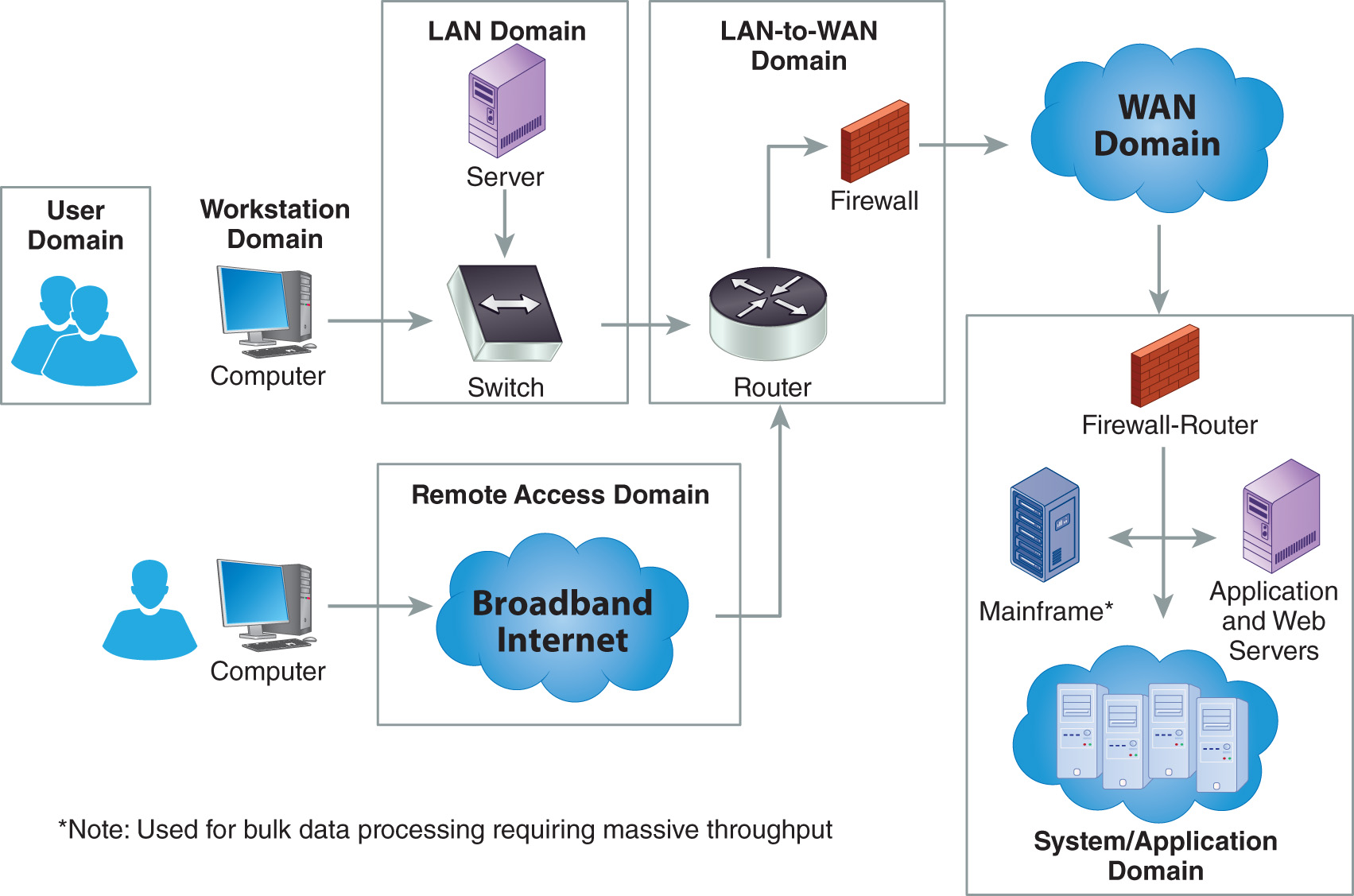IT and Network Infrastructure
Now, let’s focus our attention on risk to IT and the network infrastructure, of which hardware and software are key pieces. FIGURE 3-7 shows the seven domains of a typical IT infrastructure framework, the components of which connect to a network or to the Internet. Because it is connected to the Internet, both internal and external threats to the IT infrastructure exist. Moreover, vulnerabilities, which are weaknesses in the design, implementation, or software of the IT infrastructure assets, can also exist.

FIGURE 3-7 The seven domains of a typical IT infrastructure.
Damage to data caused by new threats includes ...
Get Fundamentals of Information Systems Security, 4th Edition now with the O’Reilly learning platform.
O’Reilly members experience books, live events, courses curated by job role, and more from O’Reilly and nearly 200 top publishers.

